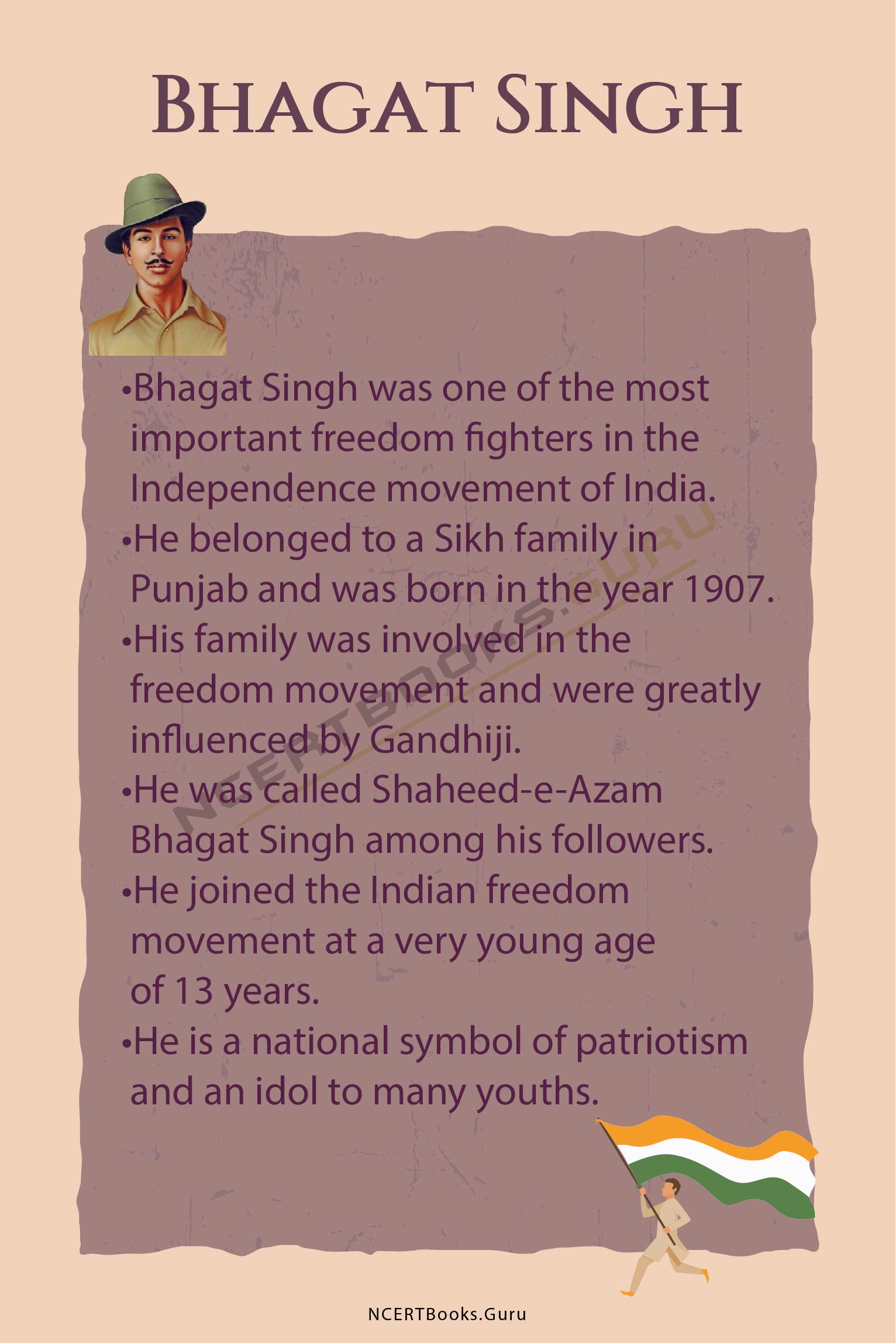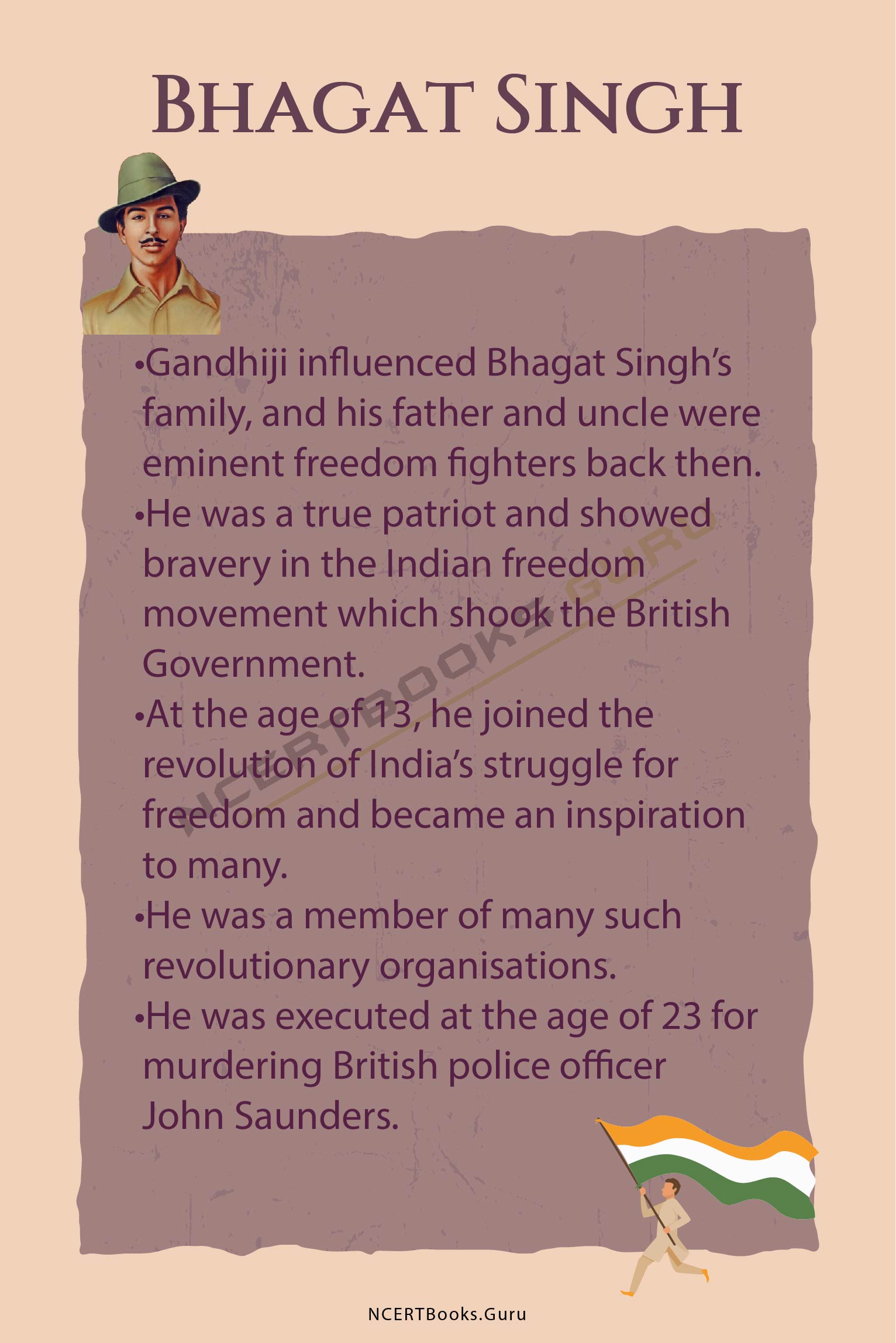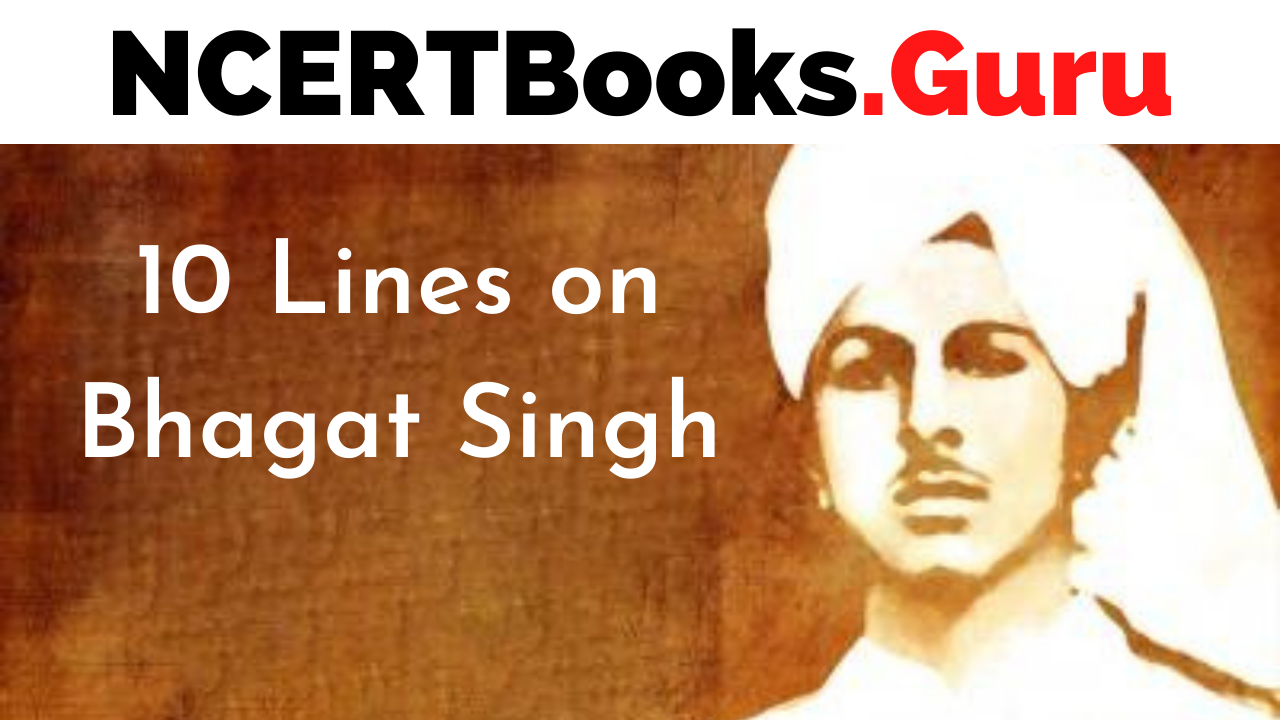10 Lines on Bhagat Singh: One of India’s bravest freedom fighter since history is Bhagat Singh, popularly known as Shaheed-e-Azam Bhagat Singh among his comrades. He is noted for his commendable contributions in India’s struggle for freedom. Born on September 28, 1907, he belonged from a Sandhu Jat family in Punjab. His family was fully involved in the struggle for freedom and used to support Gandhiji’s ideologies. Bhagat Singh joined the Independence Movement at a very young age of only 13 years.
Bhagat Singh was a true patriot. He was immensely affected by the Jallianwala Bagh Massacre and this, in a way, shaped his strong patriotic outlook. He was disillusioned with Gandhi’s principles on non-violence. Bhagat Singh joined the Young Revolutionary Movement and decided to carry out an armed revolution against the British finally.
Enhance your vocabulary and writing skills with 10 Lines Essays available. Spark up the creativity in you and access various Topics on 10 Lines all in one place.
Set 1 – 10 Lines on Bhagat Singh for kids
Set 1 is helpful for students of Classes 1, 2, 3, 4 and 5.
- Bhagat Singh was one of the most important freedom fighters in the Independence movement of India.
- He belonged to a Sikh family in Punjab and was born in the year 1907.
- His family was involved in the freedom movement and were greatly influenced by Gandhiji.
- He was called Shaheed-e-Azam Bhagat Singh among his followers.
- He joined the Indian freedom movement at a very young age of 13 years.
- Bhagat Singh has made significant contributions in the field of the struggle for freedom against the Britishers.
- He is a national symbol of patriotism and an idol to many youths.
- He became an atheist after the Hindu-Muslim riots.
- He was charged guilty of murdering a British police officer.
- He was executed at the age of 23 years with his comrades Rajguru and Sukhdev.

Set 2 – 10 Lines on Bhagat Singh for School Children
Set 2 is helpful for students of Classes 6, 7 and 8.
- Bhagat Singh was born at Banga village in the Lyallpur District of Punjab on September 28, 1907.
- He was much inspired by Kartar Singh Sarabha, a member of Gadar Party.
- He used to study in the Dayanand Anglo Vedic High School.
- In 1923 he took admission in the National College in Lahore.
- In 1926, he founded the Navjawan Bharat Sabha, for the young freedom fighters.
- He joined the Hindustan Republican Association (HRA) and later changed it to Hindustan Socialists Republican Association (HSRA).
- He killed a British police officer, John Saunders, to avenge the death of Lala Lajpat Rai.
- He underwent a hunger strike while in confinement to protest the fellow prisoner’s inhuman treatment in jail.
- He had a great passion for reading since childhood and even wrote books.
- His famous slogan ‘Inquilab Zindabad’ influenced India’s young generation to join the Freedom movement.
Set 3 – 10 Lines on Bhagat Singh for Higher Class Students
Set 3 is helpful for students of Classes 9, 10, 11, 12 and Competitive Exams.
- Gandhiji influenced Bhagat Singh’s family, and his father and uncle were eminent freedom fighters back then.
- He was a true patriot and showed bravery in the Indian freedom movement which shook the British Government.
- At the age of 13, he joined the revolution of India’s struggle for freedom and became an inspiration to many.
- His famous slogan ‘Inquilab Zindabad’, meaning long live the revolution, influenced thousands of people to come forward in the struggle for independence.
- He was a part of the “Hindustan Republican Association (HRA)” which he later on renamed as the ‘Hindustan Socialist Republican Association’ (HSRA).
- He was a member of many such revolutionary organisations.
- He joined hands with Jatin Das on a hunger strike to demand better living conditions for the prisoners in the Indian jails.
- Bhagat Singh’s comrade Jatinder Nath Sanyal wrote an autobiography on Bhagat Singh’s life and published it in May 1931.
- He was executed at the age of 23 for murdering British police officer John Saunders.
- He was the ideal inspiration for present India’s youth, and his ideologies and thoughts still linger among us.

Frequently Asked Questions on Bhagat Singh
Question 1.
What are the contributions of Bhagat Singh to the Independence Movement of India?
Answer:
Bhagat Singh was an idol to India’s young generation during the time of Independence movement. He fought for injustice against prisoners while in jail. He protested against the country’s communal riots and outbreaks back then by hunger strikes. He sacrificed his life for India’s struggle for freedom and became a martyr.
Question 2.
How did Bhagat Singh die?
Answer:
Bhagat Singh avenged Lala Lajpat Rai’s death by killing John Saunders, a British police officer. He was executed for this at the age of 23 years on March 23, 1931.
Question 3.
Who gave witness against Bhagat Singh?
Answer:
Two Indians, Shobha Singh and Shadi Lal witnessed against Bhagat Singh.
Question 4.
Where did Bhagat Singh die?
Answer:
Bhagat Singh was hanged to death in Lahore in the year 1931.
